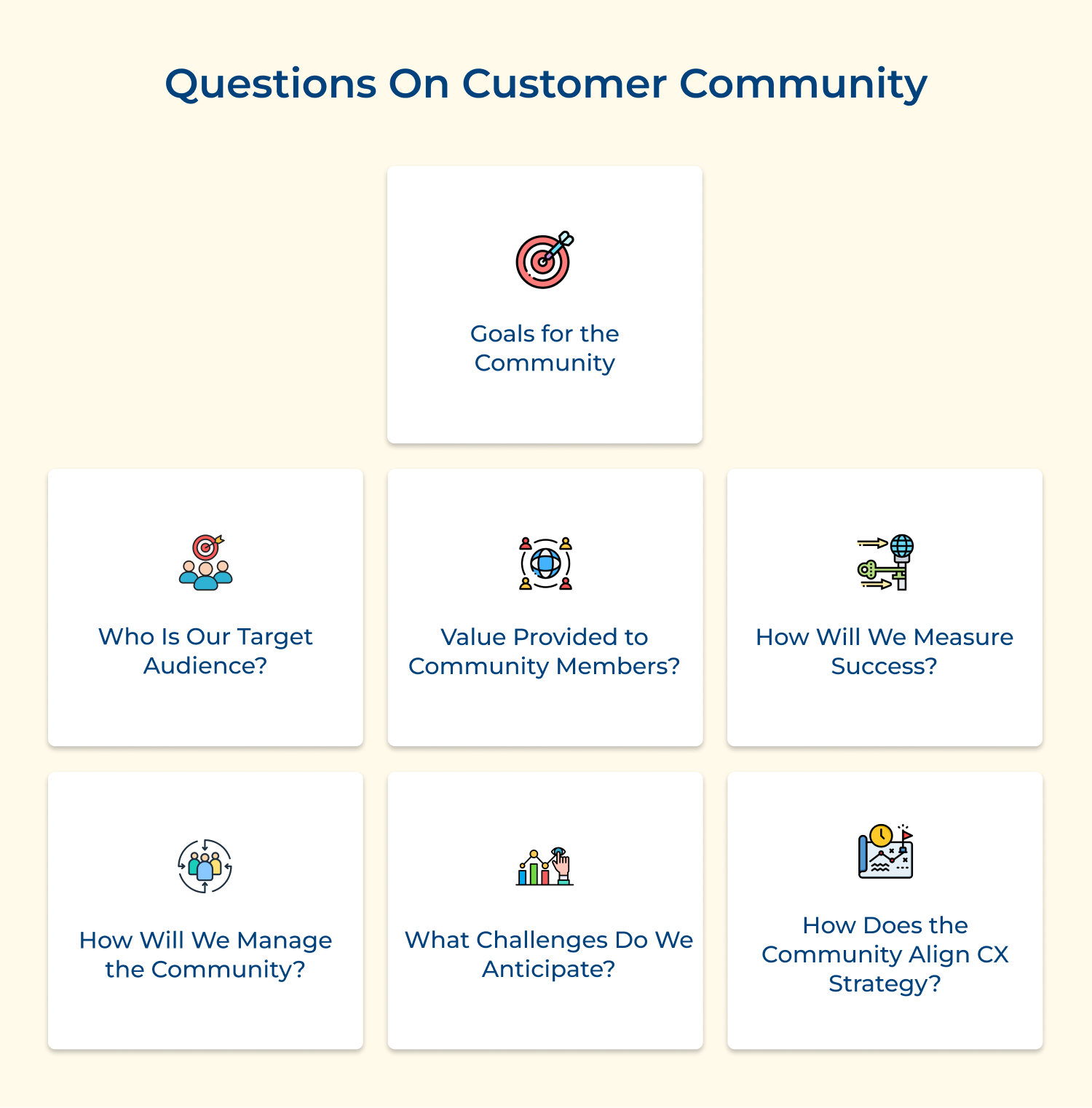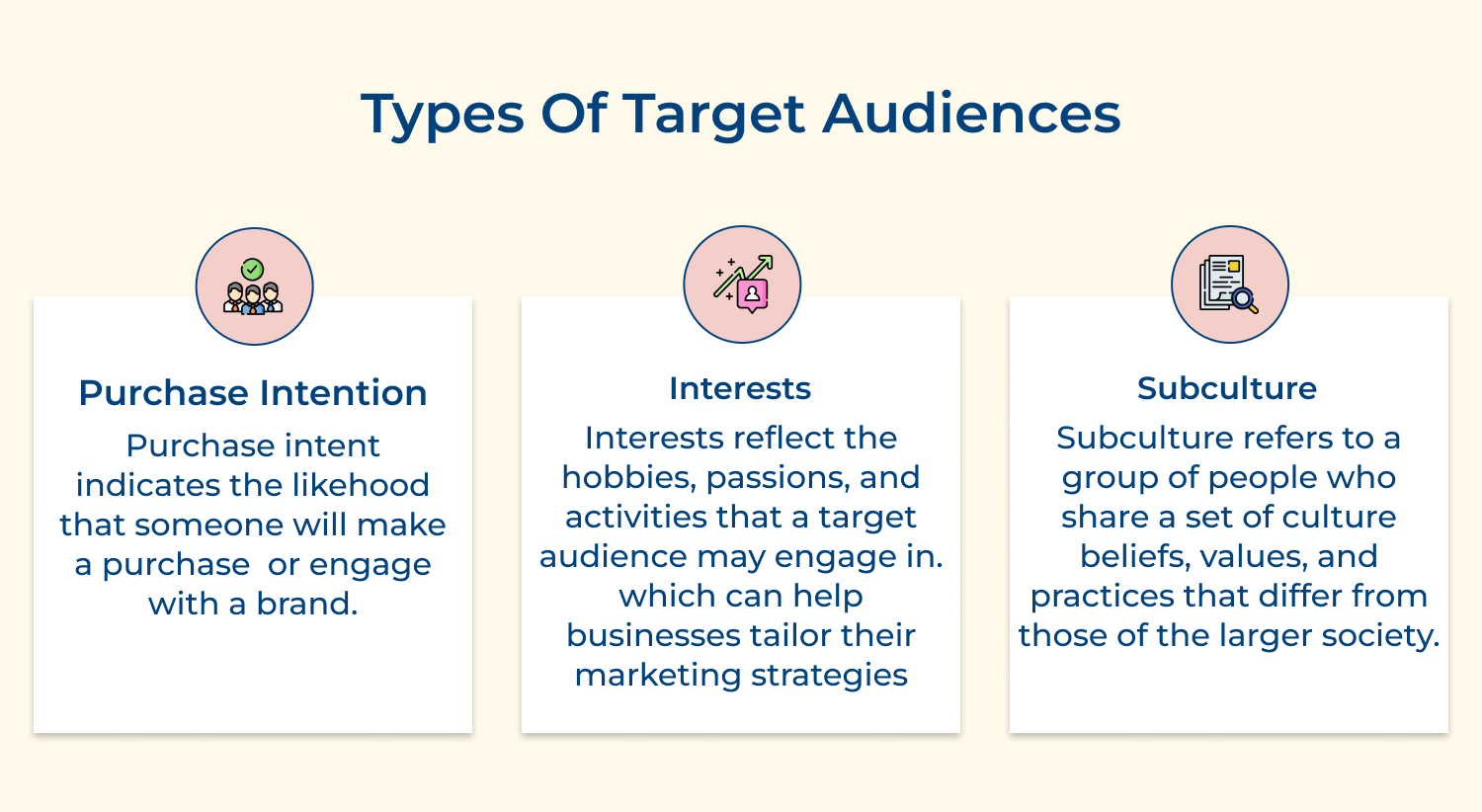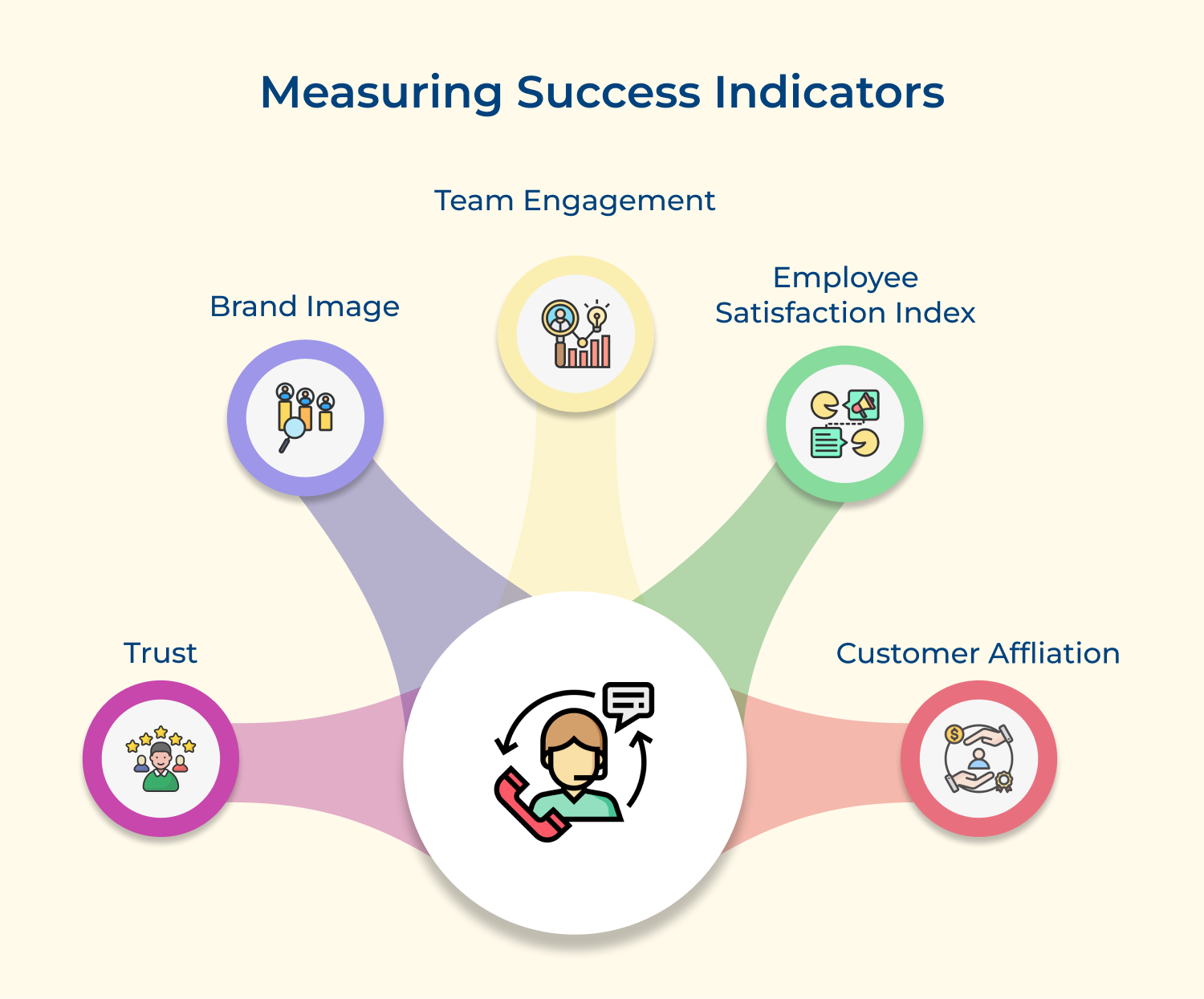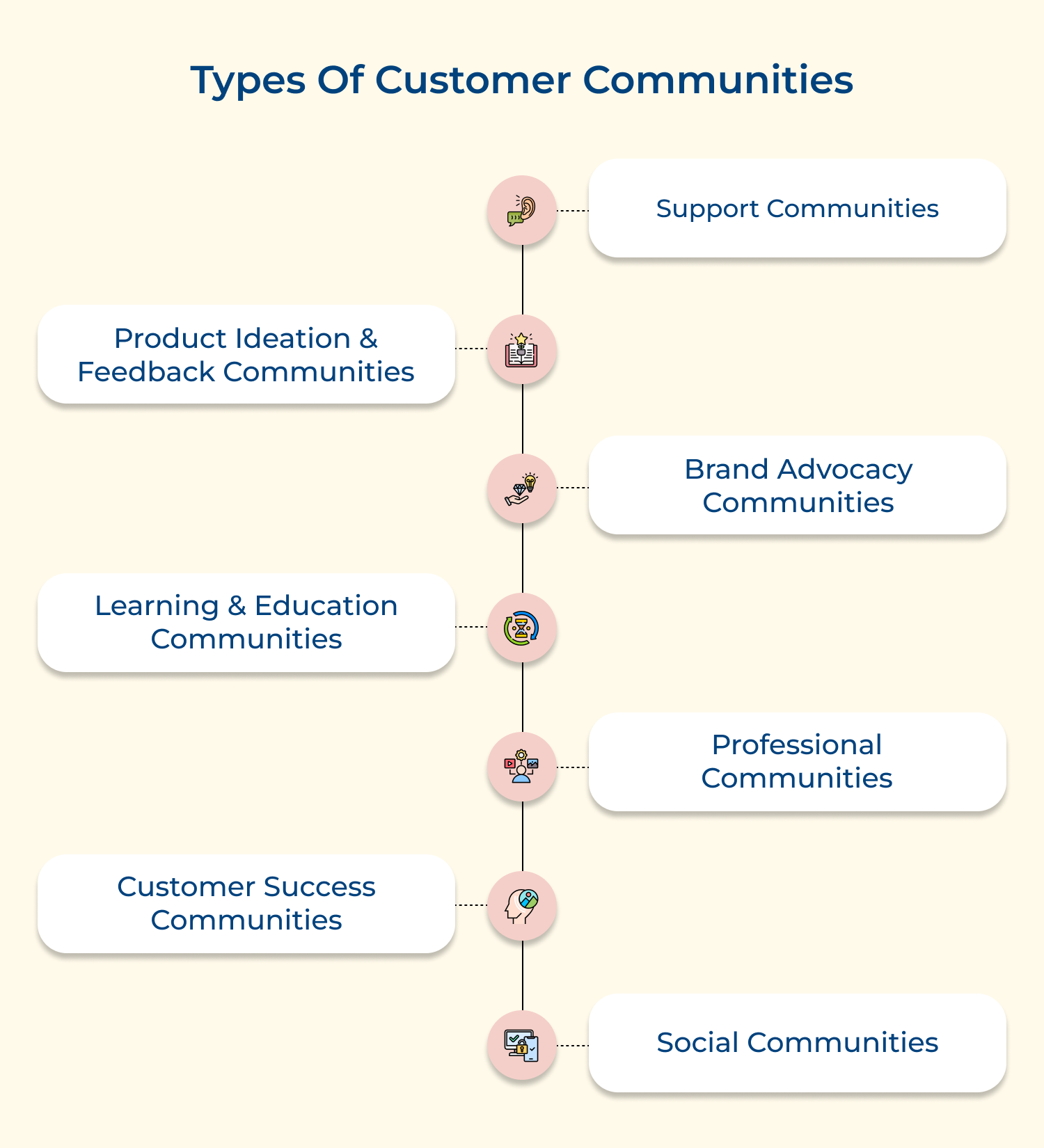1. Support Communities
Support communities are perhaps the most common type of customer community. They serve as a platform where customers can ask questions, seek solutions to problems and share their experiences with products or services.
The primary benefit of support communities is that they reduce the burden on customer service teams by enabling peer-to-peer assistance. They also create a searchable repository of solutions that can help future customers with similar issues.
The communities often feature:
- User-to-user support forums
- FAQs and knowledge bases
- Troubleshooting guides
- Direct access to support staff
2. Product Ideation and Feedback Communities
These communities focus on gathering customer input for product development and improvement.
By involving customers in the product development process, businesses can ensure they’re creating solutions that truly meet customer needs. Such communities help customers feel valued and heard, potentially increasing their loyalty to the brand.
They provide a space for:
- Idea submission and voting
- Beta testing programs
- Feature request discussions
- Product roadmap insights
3. Brand Advocacy Communities
Brand advocacy communities are designed to nurture and empower a company’s most enthusiastic customers. These communities help businesses amplify their marketing efforts through word-of-mouth recommendations and user-generated content. They also provide a powerful way to gather testimonials and success stories.
These communities often include:
- Exclusive content or perks for members
- Opportunities to participate in marketing campaigns
- Early access to new products or features
- Recognition programs for top advocates
4. Learning and Education Communities
Learning communities are centered around educating customers about a product, service, or related topics. These communities not only help customers get more value from a product but also position the company as a thought leader in its industry.
They can be particularly effective for complex products or services that require ongoing education.
They often feature:
- Online courses or webinars
- Certification programs
- User guides and tutorials
- Expert Q&A sessions
5. Industry or Professional Communities
These communities extend beyond a specific product or service to encompass broader industry topics.
While not directly focused on a company’s offerings, these communities can help businesses build strong relationships with customers by providing value beyond their products. They’re particularly useful for B2B companies or those serving specific professional niches.
They might include:
- Industry news and trend discussions
- Networking opportunities
- Job boards
- Mentorship programs
6. Customer Success Communities
Customer success communities are focused on helping customers achieve their goals with a product or service. These communities are particularly valuable for SaaS companies or businesses with complex products where customer success is crucial for retention and growth.
They often include:
- Best practice sharing
- Case studies and success stories
- Goal-setting and tracking tools
- Peer mentoring programs
7. Social or Lifestyle Communities
Some brands, particularly in B2C sectors, create communities around shared interests or lifestyles associated with their products.
These communities help create emotional connections between customers and the brand, encouraging customers to integrate the product into their lifestyles.
It includes:
- User-generated content showcasing product use
- Challenges or contests
- Discussions on lifestyle topics
- Meetups or events
Examples of Impactful Customer Communities
Many companies have successfully implemented such communities to enhance their customer experience and gather valuable feedback. Here are the examples of customer communities that illustrate their impact:
1. Apple Support Communities
Overview: Apple’s Support Communities is a platform where users can ask questions, share experiences and provide solutions related to Apple products/services. This forum is a valuable resource for troubleshooting and learning more about Apple devices.
Impact: The community allows Apple customers to connect with each other and resolve issues without direct intervention from Apple’s customer service. It helps reduce support costs while increasing customer satisfaction. Users benefit from collective knowledge and expertise, which often leads to quicker resolutions of problems.
2. LEGO Ideas
Overview: LEGO Ideas is a community-driven platform where LEGO enthusiasts can submit and vote on new set designs. If a design receives enough support, it may be turned into an official LEGO set.
Impact: This community not only engages LEGO fans by involving them in the product development process but also creates a strong sense of ownership and connection to the brand. It drives creativity and innovation while providing LEGO with fresh ideas directly from their customer base.
3. Reddit’s r/AskReddit
Overview: Reddit’s r/AskReddit is a popular subreddit where users ask questions on various topics and receive answers from the Reddit community. It’s a broad, open forum that covers countless subjects, from personal advice to general knowledge.
Impact: This community thrives on user-generated content and interaction, providing a platform for diverse opinions or advice. It enhances user engagement on Reddit by fostering discussions and creating a sense of belonging among participants.
4. Peloton Member’s Community
Overview: Peloton’s Members’ Community is an exclusive space for Peloton users to connect, share workout experiences and provide support to each other. The community includes forums, live classes, and social media groups.
Impact: The community boosts user motivation by creating a supportive environment where members can celebrate milestones and share fitness tips. It strengthens the Peloton brand’s sense of community and contributes to higher customer satisfaction.
5. Salesforce Ohana
Overview: Salesforce Ohana is the company’s vibrant customer and partner community. The term “Ohana” means family in Hawaiian, reflecting the inclusive and collaborative spirit of the community. It includes forums, events and resources for Salesforce users.
Impact: Salesforce Ohana builds knowledge sharing among users, driving innovation and enhancing the overall customer experience. It supports users in maximizing the value of Salesforce products/services while promoting a sense of belonging and support within the ecosystem.
6. Adobe Creative Cloud Community
Overview: Adobe’s Creative Cloud Community provides a platform for users of Adobe’s suite of creative tools to connect, share tips and seek advice. The community includes forums, user groups and educational resources.
Impact: This community helps Adobe users stay updated on best practices, troubleshoot issues, and discover new features. By facilitating knowledge exchange as well as peer support, Adobe enhances customer satisfaction and strengthens its brand’s reputation as a leader in creative software.
The Power of Customer Communities: Key Takeaways
Building a customer community can profoundly impact engagement, loyalty and brand success. By creating spaces where customers connect, share and collaborate, businesses builds deeper relationships and gain invaluable insights. Whether through support forums, creative collaboration platforms, or exclusive networks, these communities offer significant benefits, including enhanced customer satisfaction, innovative feedback and stronger brand advocacy.
Investing in a well-structured community not only aligns with modern customer expectations but also drives long-term growth and loyalty. As businesses continue to evolve, harnessing the power of customer communities will remain a crucial strategy for achieving sustainable success.











